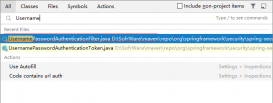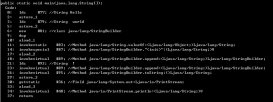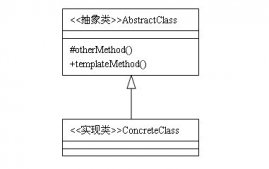一:Struts开发步骤:
1. web项目,引入struts - jar包
2. web.xml中,引入struts的核心功能
配置过滤器
3. 开发action
4. 配置action
src/struts.xml
二:详细配置
1.引入8个jar文件
commons-fileupload-1.2.2.jar 【文件上传相关包】
commons-io-2.0.1.jar
struts2-core-2.3.4.1.jar 【struts2核心功能包】
xwork-core-2.3.4.1.jar 【Xwork核心包】
ognl-3.0.5.jar 【Ognl表达式功能支持表】
commons-lang3-3.1.jar 【struts对java.lang包的扩展】
freemarker-2.3.19.jar 【struts的标签模板库jar文件】
javassist-3.11.0.GA.jar 【struts对字节码的处理相关jar】
2.web.xml详细配置
|
1
2
3
4
5
6
7
8
9
10
11
12
13
14
15
16
17
18
19
|
<?xml version="1.0" encoding="UTF-8"?><web-app version="2.5" xmlns="http://java.sun.com/xml/ns/javaee" xmlns:xsi="http://www.w3.org/2001/XMLSchema-instance" xsi:schemaLocation="http://java.sun.com/xml/ns/javaee http://java.sun.com/xml/ns/javaee/web-app_2_5.xsd"> <!-- 其他拦截器 --> <!-- 引入struts核心过滤器 --> <filter> <filter-name>struts2</filter-name> <filter-class>org.apache.struts2.dispatcher.ng.filter.StrutsPrepareAndExecuteFilter</filter-class> </filter> <filter-mapping> <filter-name>struts2</filter-name> <url-pattern>/*</url-pattern> </filter-mapping> <welcome-file-list> <welcome-file>index.jsp</welcome-file> </welcome-file-list></web-app> |
3.开发Action(3种方式)
1种:直接继承ActionSupport
|
1
2
3
4
5
6
7
8
9
|
package cn.itcast.a_config;import com.opensymphony.xwork2.ActionSupport;public class UserAction extends ActionSupport { // Action中业务处理方法 public String login() { System.out.println("UserAction.login()"); return "success"; }} |
2种:继承Action接口
|
1
2
3
4
5
6
7
8
9
10
11
12
13
14
|
package cn.itcast.a_config;import com.opensymphony.xwork2.Action;import com.opensymphony.xwork2.ActionSupport;public class UserAction implements Action { // Action中业务处理方法 public String login() { System.out.println("UserAction.login()"); return "success"; } @Override public String execute() throws Exception { return null; }} |
3种:不继承任何类,不实现任何接口
|
1
2
3
4
5
6
7
8
9
10
11
12
13
14
15
16
17
18
|
package cn.itcast.a_config;import com.opensymphony.xwork2.Action;import com.opensymphony.xwork2.ActionSupport;public class UserAction { private String userName; public void setUserName(String userName) { this.userName = userName; } // Action中业务处理方法 public String login() { System.out.println("UserAction.login()" + userName); return "login"; } public String register() { System.out.println("register()" + userName); return "register"; }} |
4. 配置action : src/struts.xml
|
1
2
3
4
5
6
7
8
9
10
11
|
<?xml version="1.0" encoding="UTF-8" ?><!DOCTYPE struts PUBLIC "-//Apache Software Foundation//DTD Struts Configuration 2.3//EN" "http://struts.apache.org/dtds/struts-2.3.dtd"><struts> <package name="config" namespace="/" extends="struts-default"> <action name="login" class="cn.a_config.UserAction" method="login"> <result name="success">/index.jsp</result> </action> </package></struts> |
本文有关struts开发流程及详细配置的内容就到这里,希望对大家有所帮助。欢迎阅读本站其他有关专题,感谢大家对服务器之家的支持!
原文链接:http://blog.csdn.net/sinat_34803353/article/details/56671835















